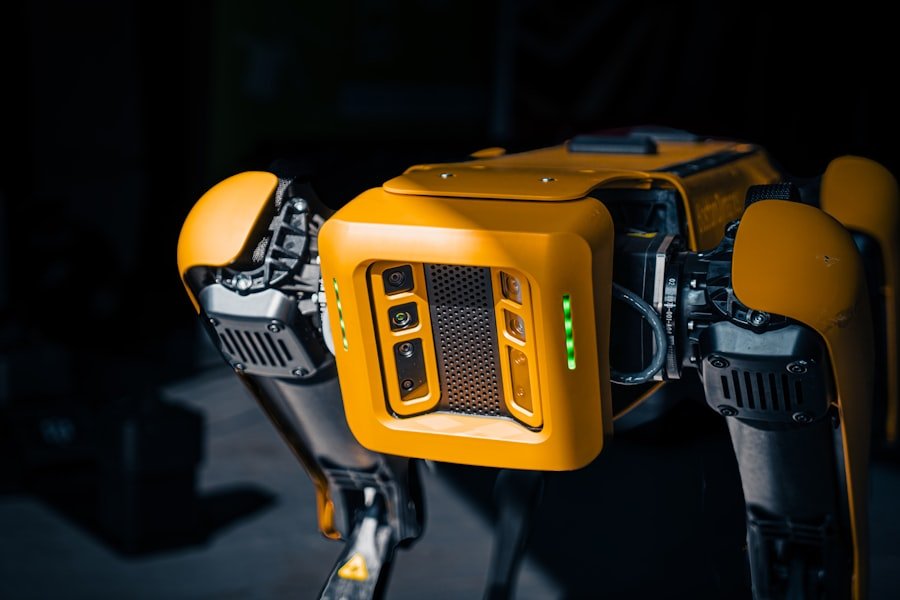Autonomous Maintenance (AM) is a pivotal concept within the realm of Total Productive Maintenance (TPM), designed to empower operators to take ownership of their equipment. This approach encourages operators to engage in routine maintenance tasks, thereby fostering a sense of responsibility and accountability for the machinery they work with daily. By equipping operators with the necessary skills and knowledge, organisations can enhance equipment reliability and performance while simultaneously reducing downtime and maintenance costs.
The essence of AM lies in its ability to bridge the gap between operators and maintenance personnel, creating a collaborative environment where both parties work towards a common goal: maximising equipment efficiency. At its core, Autonomous Maintenance involves a series of structured activities that operators undertake to maintain their equipment. These activities range from basic cleaning and lubrication to more complex tasks such as identifying potential issues before they escalate into significant problems.
By engaging in these practices, operators not only develop a deeper understanding of their machines but also contribute to a culture of continuous improvement within the organisation. This proactive approach to maintenance is essential in today’s fast-paced manufacturing environment, where the ability to respond swiftly to equipment failures can significantly impact overall productivity and profitability.
Summary
- Autonomous Maintenance is a key pillar of Total Productive Maintenance (TPM) and involves operators taking responsibility for the upkeep of their equipment.
- The concept of Autonomous Maintenance originated in Japan in the 1960s as part of the TPM system developed by Seiichi Nakajima.
- Implementing Autonomous Maintenance can lead to improved equipment reliability, reduced downtime, and increased productivity.
- The 7 Steps of Autonomous Maintenance include initial cleaning, countermeasure implementation, standardization, and autonomous inspection.
- Autonomous Maintenance plays a crucial role in Lean Manufacturing by empowering operators to identify and address equipment issues, leading to a more efficient production process.
The History of Autonomous Maintenance
The origins of Autonomous Maintenance can be traced back to the development of Total Productive Maintenance in Japan during the late 20th century. The concept emerged as part of the Toyota Production System, which sought to eliminate waste and enhance efficiency across all aspects of manufacturing. As companies began to recognise the importance of involving operators in maintenance activities, the idea of Autonomous Maintenance gained traction.
The philosophy was rooted in the belief that those who operate machinery on a daily basis possess invaluable insights into its functioning and potential issues. In the early days, the implementation of AM was met with resistance from both operators and maintenance teams. Operators were often accustomed to a more passive role, while maintenance personnel were hesitant to relinquish control over equipment upkeep.
However, as organisations began to witness the tangible benefits of involving operators in maintenance tasks—such as reduced downtime and improved equipment performance—the acceptance of AM grew. Over time, it became clear that empowering operators not only enhanced their skills but also fostered a culture of teamwork and collaboration, ultimately leading to more efficient manufacturing processes.
The Benefits of Implementing Autonomous Maintenance

The implementation of Autonomous Maintenance offers a multitude of benefits that extend beyond mere equipment upkeep. One of the most significant advantages is the enhancement of equipment reliability. When operators are trained to perform routine maintenance tasks, they become more attuned to the nuances of their machines, enabling them to identify potential issues before they escalate into costly breakdowns.
This proactive approach not only minimises unplanned downtime but also extends the lifespan of equipment, resulting in substantial cost savings for organisations. Moreover, Autonomous Maintenance fosters a culture of continuous improvement within the workplace. As operators take ownership of their equipment, they are more likely to engage in problem-solving activities and suggest improvements based on their firsthand experiences.
This empowerment leads to increased job satisfaction and morale among employees, as they feel valued and integral to the organisation’s success. Additionally, by reducing reliance on maintenance personnel for routine tasks, organisations can allocate their resources more effectively, allowing skilled technicians to focus on more complex maintenance issues that require specialised knowledge.
The 7 Steps of Autonomous Maintenance
The implementation of Autonomous Maintenance typically follows a structured framework consisting of seven key steps. The first step involves the initial cleaning and inspection of equipment, which serves as a foundation for understanding its current condition. During this phase, operators are encouraged to thoroughly clean their machines, removing any dirt or debris that may hinder performance.
This process not only improves equipment functionality but also allows operators to identify any existing issues that may require attention. The second step focuses on eliminating sources of contamination and ensuring that equipment is maintained in a clean state. Operators are trained to recognise potential contaminants—such as dust, oil leaks, or foreign materials—and take appropriate measures to prevent them from affecting machine performance.
Following this, the third step involves standardising cleaning and lubrication procedures, ensuring that all operators follow consistent practices that promote optimal equipment performance. The fourth step introduces operators to routine inspections, where they learn to monitor key performance indicators and identify any abnormalities in machine operation. This proactive monitoring is crucial for early detection of potential issues.
The fifth step involves operator training on basic maintenance tasks, empowering them with the skills necessary to perform minor repairs and adjustments as needed. The sixth step encourages operators to take ownership of their equipment by developing a sense of pride in its upkeep. This cultural shift is essential for fostering a collaborative environment where operators feel responsible for maintaining their machines.
Finally, the seventh step involves continuous improvement initiatives, where operators are encouraged to share insights and suggestions for enhancing maintenance practices further.
The Role of Autonomous Maintenance in Lean Manufacturing
Autonomous Maintenance plays a critical role in Lean Manufacturing by aligning with its core principles of waste reduction and continuous improvement. In a Lean environment, every aspect of production is scrutinised for efficiency, and maintenance is no exception. By empowering operators through AM practices, organisations can significantly reduce waste associated with unplanned downtime and inefficient maintenance processes.
This alignment not only enhances overall productivity but also contributes to a more streamlined manufacturing operation. Furthermore, Autonomous Maintenance supports Lean initiatives by fostering a culture of collaboration and teamwork among employees. When operators are actively involved in maintenance activities, they develop a deeper understanding of production processes and become more invested in achieving organisational goals.
This sense of ownership translates into improved communication between operators and maintenance teams, facilitating quicker problem resolution and more effective decision-making.
While both Autonomous Maintenance and Preventive Maintenance aim to enhance equipment reliability and reduce downtime, they differ significantly in their approaches and execution. Preventive Maintenance is typically scheduled at regular intervals based on manufacturer recommendations or historical data regarding equipment performance. This approach relies heavily on maintenance personnel to execute tasks such as inspections, lubrication, and repairs without direct involvement from operators.
In contrast, Autonomous Maintenance places the responsibility for routine maintenance tasks directly in the hands of operators. This shift not only empowers employees but also allows for more frequent monitoring and immediate response to potential issues. Operators are trained to recognise early warning signs and address them proactively, which can lead to quicker resolutions compared to traditional Preventive Maintenance schedules that may overlook minor issues until the next scheduled inspection.
Moreover, while Preventive Maintenance can be effective in maintaining equipment health, it may not always account for the unique insights that operators possess regarding their machines’ day-to-day performance. Autonomous Maintenance leverages this knowledge by encouraging operators to engage actively with their equipment, leading to more informed decision-making and ultimately better outcomes for the organisation.
Common Challenges in Implementing Autonomous Maintenance

Despite its numerous benefits, implementing Autonomous Maintenance is not without challenges. One significant hurdle is resistance from employees who may be accustomed to traditional maintenance practices. Operators might feel overwhelmed by the additional responsibilities or fear that they lack the necessary skills to perform maintenance tasks effectively.
This resistance can be mitigated through comprehensive training programmes that emphasise the importance of AM and equip employees with the skills needed for success. Another challenge lies in establishing a supportive organisational culture that values employee input and encourages collaboration between operators and maintenance teams. In some cases, management may be hesitant to relinquish control over maintenance activities or may not fully understand the benefits of empowering operators.
To overcome this barrier, it is essential for leadership to champion Autonomous Maintenance initiatives and demonstrate their commitment through active participation and support. Additionally, organisations may struggle with developing standardised procedures for maintenance tasks across different teams or shifts. Inconsistent practices can lead to confusion among operators and undermine the effectiveness of AM efforts.
To address this issue, organisations should invest time in creating clear guidelines and documentation that outline best practices for maintenance activities while allowing for flexibility based on specific operational needs.
Tips for Successfully Implementing Autonomous Maintenance
To successfully implement Autonomous Maintenance within an organisation, several key strategies can be employed. First and foremost, it is crucial to provide comprehensive training for all employees involved in AM activities. This training should encompass not only technical skills related to equipment maintenance but also foster an understanding of the broader goals associated with AM initiatives.
By equipping employees with knowledge and skills, organisations can build confidence among operators and encourage active participation. Another important aspect is fostering open communication between operators and maintenance personnel. Regular meetings or feedback sessions can facilitate discussions about challenges faced during maintenance tasks and allow for collaborative problem-solving efforts.
Encouraging operators to share their insights can lead to valuable improvements in maintenance practices while reinforcing a culture of teamwork. Additionally, organisations should establish clear metrics for measuring the success of Autonomous Maintenance initiatives. By tracking key performance indicators such as equipment uptime, maintenance costs, and operator engagement levels, organisations can assess the effectiveness of their AM efforts over time.
This data-driven approach enables continuous improvement by identifying areas for further development or adjustment. Finally, it is essential for leadership to demonstrate commitment to Autonomous Maintenance by actively participating in training sessions and supporting initiatives that empower employees. When management visibly champions AM efforts, it reinforces the importance of these practices within the organisational culture and encourages widespread adoption among all employees involved in production processes.
Autonomous maintenance is a crucial aspect of ensuring customer satisfaction in any industry. By implementing autonomous maintenance practices, businesses can improve the reliability and efficiency of their equipment, ultimately leading to higher levels of customer satisfaction. A related article on this topic can be found at this link, which delves deeper into the importance of meeting customer expectations and how autonomous maintenance can play a key role in achieving this goal.
FAQs
What is Autonomous Maintenance?
Autonomous Maintenance is a maintenance approach where operators are responsible for the routine maintenance of equipment and machinery within their work area. This includes tasks such as cleaning, lubricating, and inspecting equipment to prevent breakdowns and defects.
What are the key principles of Autonomous Maintenance?
The key principles of Autonomous Maintenance include:
1. Cleaning and inspection
2. Initial cleaning and lubrication
3. General inspection
4. Autonomous inspection
5. Standardization
What are the benefits of implementing Autonomous Maintenance?
Implementing Autonomous Maintenance can lead to benefits such as:
1. Increased equipment reliability
2. Reduced breakdowns and defects
3. Improved overall equipment effectiveness
4. Empowerment of operators
5. Enhanced teamwork and communication
How does Autonomous Maintenance differ from other maintenance approaches?
Autonomous Maintenance differs from other maintenance approaches in that it places the responsibility for routine maintenance tasks on the operators themselves, rather than solely relying on maintenance technicians or engineers.
What is the role of operators in Autonomous Maintenance?
Operators play a key role in Autonomous Maintenance by taking ownership of the routine maintenance tasks for the equipment and machinery within their work area. This includes conducting cleaning, lubrication, and inspections to ensure the equipment operates at its best.
